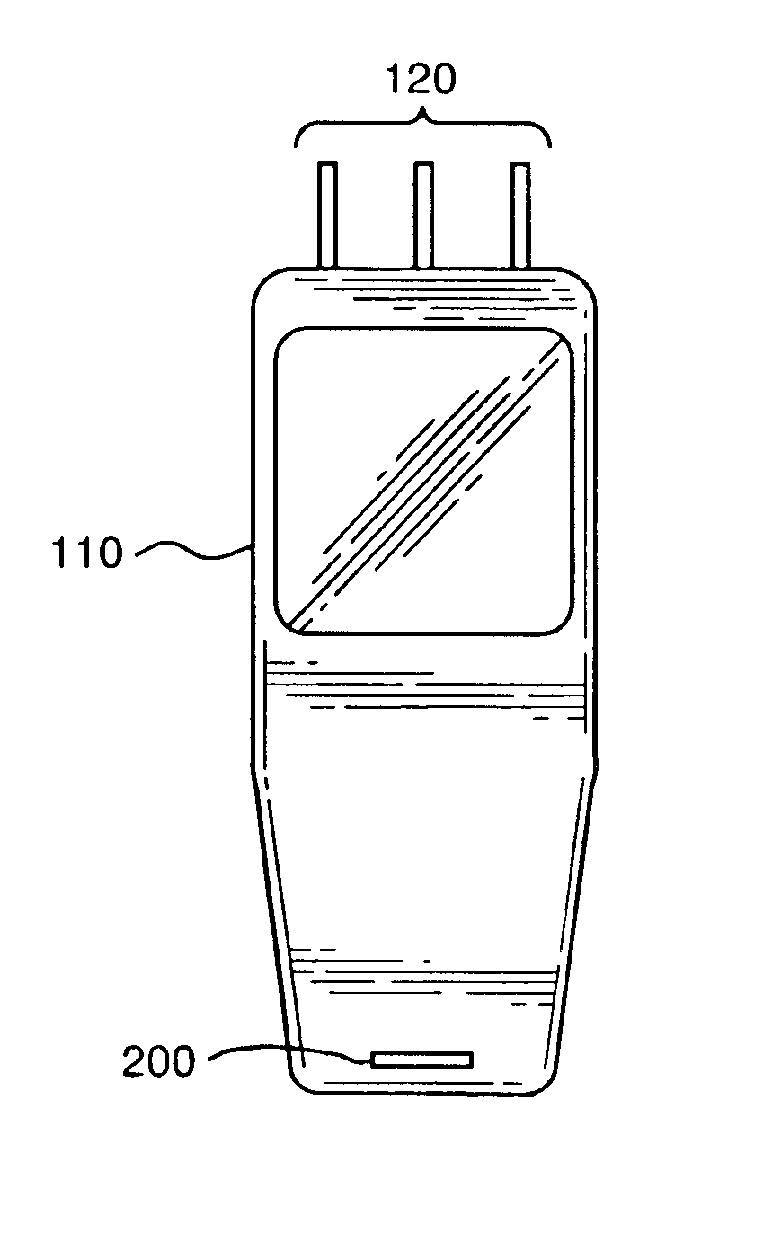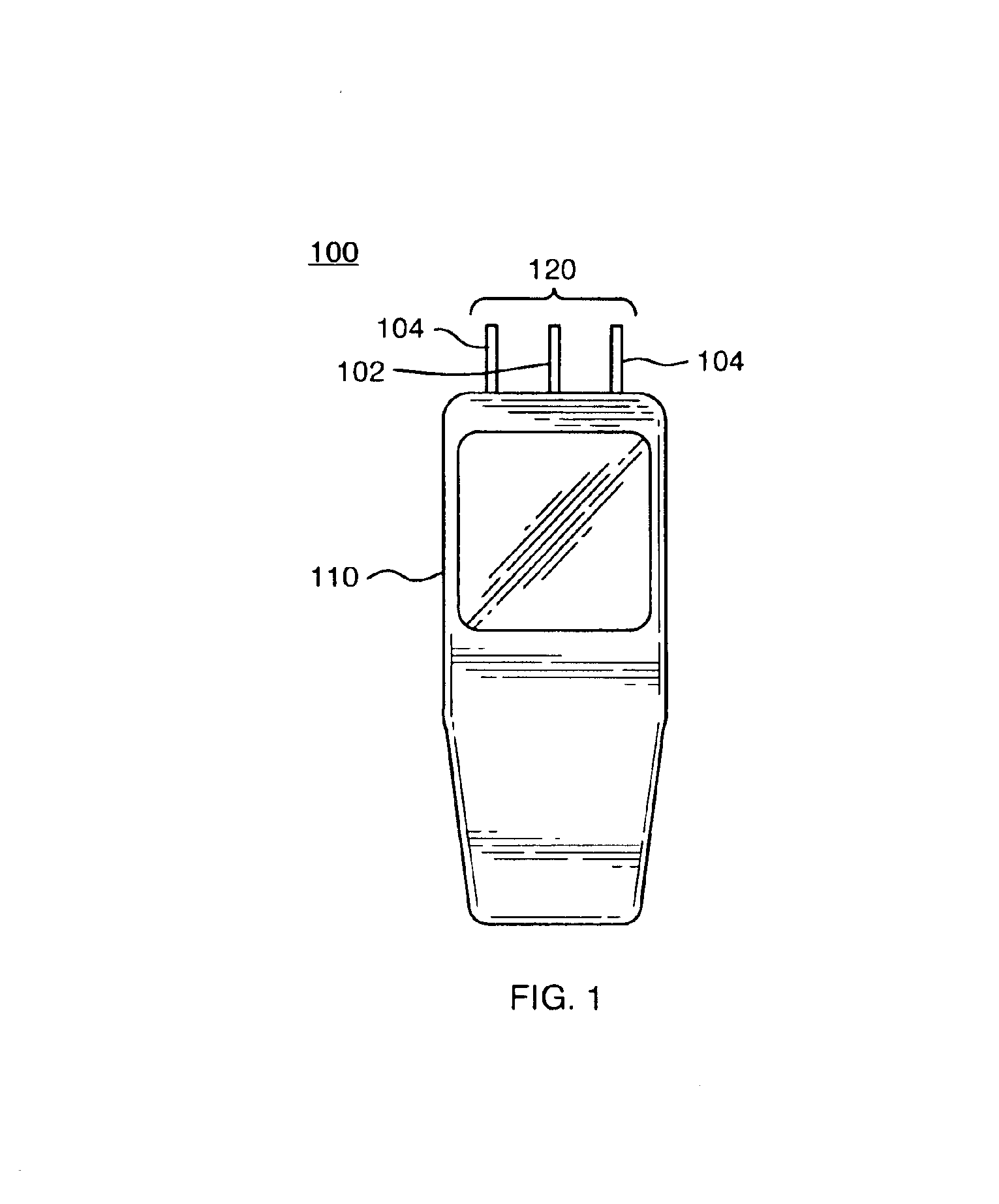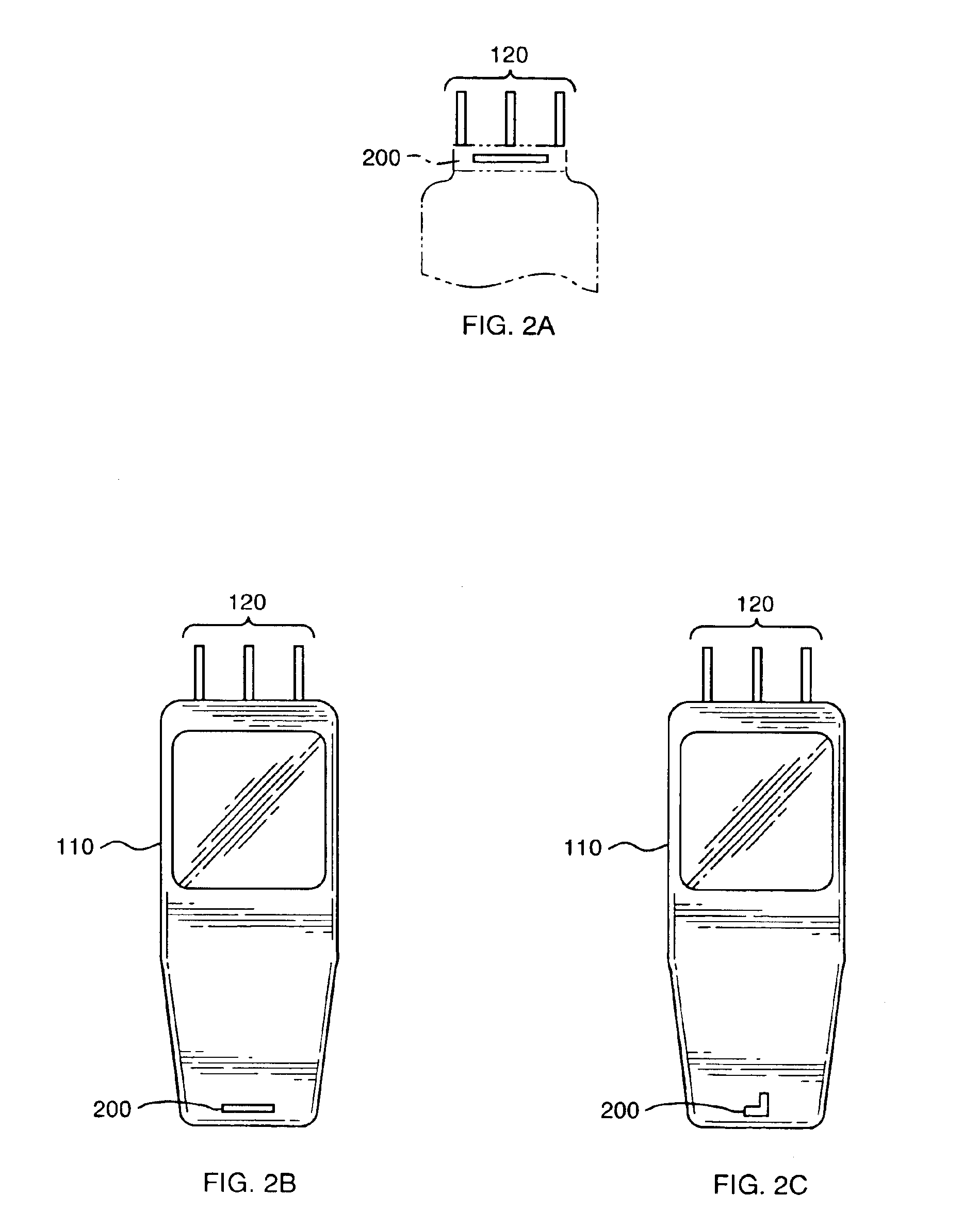Adaptive receive and omnidirectional transmit antenna array
a technology of omnidirectional transmitting and receiving antennas, applied in the field of wireless communication systems, can solve problems such as complicated power control system performance, and achieve the effects of increasing forward capacity, increasing reverse capacity, and increasing the overall number of users
- Summary
- Abstract
- Description
- Claims
- Application Information
AI Technical Summary
Benefits of technology
Problems solved by technology
Method used
Image
Examples
Embodiment Construction
A description of preferred embodiments of the invention follows.
Turning attention now to the drawings, FIG. 1 illustrates a wireless device 100 that consists of a housing 110 having incorporated therein an antenna array 120. In general the device 100 is some form of wireless communications device, such as a cellular mobile handset, or a personal digital assistant such as a Palm Pilot.
The antenna array 100 provides for directional reception of forward link radio signals. The forward link signals may be transmitted from a base station, in the case of a cellular handset 100, or from a access point, in the case of a wireless data unit 100 making use of wireless local area network (WLAN) protocols. By directively receiving signals originating more or less from the location of a particular base station and / or access point, the antenna array 120 assists in reducing the overall effect of intercell interference and multipath fading for the mobile unit 100. Moreover, as will be understood sho...
PUM
 Login to View More
Login to View More Abstract
Description
Claims
Application Information
 Login to View More
Login to View More - R&D
- Intellectual Property
- Life Sciences
- Materials
- Tech Scout
- Unparalleled Data Quality
- Higher Quality Content
- 60% Fewer Hallucinations
Browse by: Latest US Patents, China's latest patents, Technical Efficacy Thesaurus, Application Domain, Technology Topic, Popular Technical Reports.
© 2025 PatSnap. All rights reserved.Legal|Privacy policy|Modern Slavery Act Transparency Statement|Sitemap|About US| Contact US: help@patsnap.com



